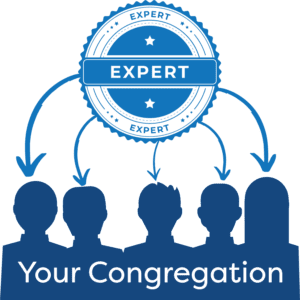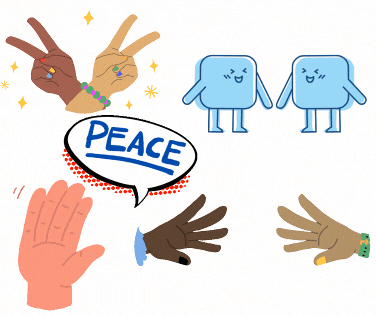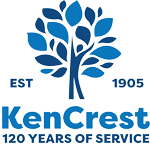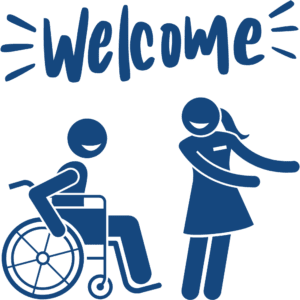
Church Resources
To Make Your Church Culture More Welcoming
Church Culture Resources for Accessibility
Click each item below to find mindset shifts and practical tips for changing the culture of your church
Creating a Welcoming Culture in Your Congregation

Mindset Shifts
- We must be intentional in thought and action to be truly accessible to all.
- We want everyone to feel welcome at our church, not just current attendees.
- Changes don't have to be expensive or time-consuming to make a difference for those with accessibility needs.
- Enhancing accessibility for one group often benefits others as well.
Helpful Documents:
Disability Etiquette - A Starting Guide (infographic)
Disability Etiquette Guide (plain text)
Disability Etiquette Guide (extensive)

1 out of every 4 people in the U.S. have some sort of disability. (CDC)

Ask the Experts!
Many of your congregants likely have a loved one with a disability or have a disability themselves.
They are a built-in panel of subject-matter experts!
Conversations within your faith community can identify ways to make your congregation and building more welcoming and accessible for people with disabilities.
Train Greeters and Ushers to...
Know what resources your church offers and where to find them.
Ask how they can help someone and what the person needs.
- Do not assume a person's needs.
- Do not touch a person or any mobility devices without their permission.
Treat all visitors with the same hospitality, regardless of their disability.
- Speak at a normal volume, unless someone asks you to speak louder.
- Look the person with a disability in the eye and speak directly to them.
- Give everyone a bulletin, even if you think they cannot read.
Creating a Welcoming Culture in Leadership

Mindset Shifts
- We serve out of the abundance of God's love, not fear of scarcity. Does our budget reflect our values?
- Waiting to make changes until someone with an accessibility need arrives means missing an opportunity for hospitality.
- Accessibility commitment must come from everyone, not just leaders. How can leaders inspire others to embrace a culture change?
Celebrate regularly!
This is a long-term commitment. Every step toward accessibility and inclusiveness is a victory!

Platforms for virtual meetings have a variety of accessibility settings. (Virtual Tips and Hybrid Tips)
Consider Completing a Book Study

Choose a book on disability justice in the church.
(See recommendations here!)
Gather a group of people to read, learn, and discuss the book.
The group could consist of:
- church council or other leadership body
- volunteers who are interested in the topic
- the whole congregation
Consider Creating an Accessibility Task Force

This group would meet annually to:
1. Use an Accessibility Audit to evaluate the building and grounds, worship experience, and congregational culture.
2. Report back to celebrate gains from last year.
3. Make prioritized recommendations for next year.
Creating a Welcoming Culture In Worship and Events

Mindset Shifts
- Everyone expresses their faith differently, which may be louder or involve more movement than we're used to.
- We can honor everyone's faith by focusing on our relationship with God, not others' actions.
- If someone seems to need assistance, we can offer help, ensuring we ask for their needs or permission before acting.
Perspective Matters!
Do you livestream or record your worship service?
If so, you're already making worship more accessible by including those who cannot attend in person!

A social story can help people with autism participate in worship.
Announcements
 Share accessibility options and/or accommodations in print and out loud. Do this at the beginning of service or at an appropriate time.
Share accessibility options and/or accommodations in print and out loud. Do this at the beginning of service or at an appropriate time.
For example, announce communion accommodations as you begin the meal.
Some suggestions include:
- where to find ADA compliant restrooms
- where to find hearing assistance devices or large print bulletins
- how to access electronic versions of worship materials
- what to do if someone needs communion brought to their seat
- what dietary options you offer, like gluten-free bread or non-alcoholic wine/juice
Passing the Peace

Offer alternatives to handshakes and/or hugs during the passing of the peace.
Some ideas include:
- V peace sign
- high five
- fist bump
- wave
- simply say "peace" with no physical contact
Worship Language

Utilize person-first language
Ensure print materials are accessible for all, including the reading level of the language (see Bulletin/Website Resources)
Try more inclusive forms of common worship phrases:
-
- Children's Sermon >>> Sermon on the Steps, Mini Message, or A Message for the Young in Spirit
- Please Stand >>> "Please stand as you are comfortable" or "I invite you to take your personal reverence posture"
- Hear our prayer >>> "Receive our prayer"
New Programs
 Pew Buddy Initiative:
Pew Buddy Initiative:
Match an appropriate congregation member with a person who needs support or companionship. They can sit together during worship or other events.
Paraprofessional Fund:
Provide financial compensation for a person's paraprofessional to attend worship, Sunday School, or fellowship events with them.
Transportation Pool:
Connect willing congregation members to people who cannot transport themselves to church.
Other Tips

If you livestream or record worship,
include home participants in your welcome and in any instructional information that may be different for someone worshiping at home.
If you have chairs rather than pews,
have ushers offer to move chairs so the individual can sit wherever they would like.
If you project parts of worship onto a screen,
continue to provide a print copy for those who need it.
The Power of Prayer
And pray in the Spirit on all occasions with all kinds of prayers and requests.
With this in mind, be alert and always keep on praying for all the Lord’s people.
Ephesians 6:18 (NIV)
Prayer is an important source of support for KenCrest's mission. You can lift up the needs of those we serve and the direct service providers who support them by praying for both spiritual and physical strength as well as hope for these communities. You can also pray for wisdom and discernment for policy makers working with legislation impacting people with disabilities, children, and working families.
We appreciate any prayers you and your congregation lift up on our behalf.

